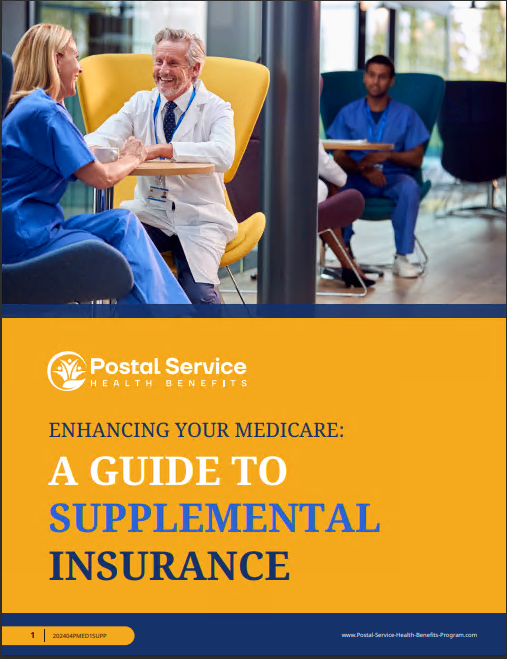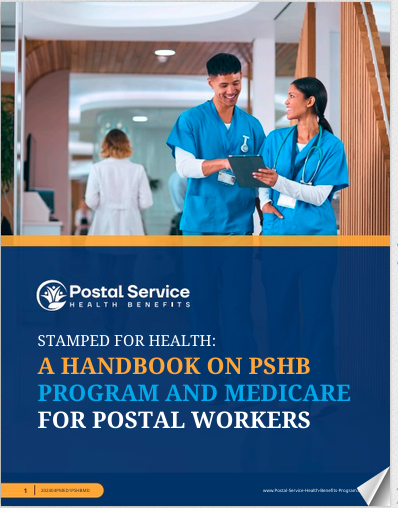Key Takeaways
-
Medicare Supplement Plans (Medigap) can help reduce out-of-pocket healthcare costs, but they are not required for everyone, especially if you have coverage through the Postal Service Health Benefits (PSHB) program.
-
Before deciding on extra coverage, consider your current and future healthcare needs, including hospital visits, specialist care, and prescription drug costs.
Understanding Medicare Supplement Plans: What Are They?
Medicare Supplement Plans, also known as Medigap, are designed to cover expenses that Original Medicare doesn’t, such as copayments, coinsurance, and deductibles. However, if you are a United States Postal Service (USPS) retiree or employee approaching retirement, you may already have access to comprehensive coverage through the Postal Service Health Benefits (PSHB) program.
How Medicare Works for USPS Retirees
If you’re retired and enrolled in Medicare, your coverage includes:
-
Medicare Part A (Hospital Insurance) – Covers inpatient hospital stays, skilled nursing facility care, and some home healthcare.
-
Medicare Part B (Medical Insurance) – Covers doctor visits, outpatient care, and preventive services.
-
Medicare Part D (Prescription Drug Coverage) – Covers prescription medications if you enroll in a standalone plan.
PSHB plans may work alongside Medicare to lower your out-of-pocket expenses. But do you really need an additional Medigap policy?
The Pros of Getting a Medicare Supplement Plan
A Medigap policy may offer extra financial protection if you expect higher healthcare costs. Here’s why some USPS retirees and employees consider getting one:
1. Reduced Out-of-Pocket Costs
-
Medigap helps pay for Medicare Part A and Part B deductibles and coinsurance, reducing unexpected expenses.
-
Some plans may cover excess charges if your doctor doesn’t accept Medicare’s approved rates.
-
Without Medigap, you could face unpredictable expenses for hospital stays, surgeries, and specialist care.
2. Predictable Healthcare Expenses
-
Having Medigap can make your medical costs more predictable by limiting how much you pay for services.
-
This can be beneficial for retirees on a fixed income who want to avoid large, surprise medical bills.
-
If you require frequent medical care, Medigap can provide stability in your healthcare budget.
3. Nationwide Coverage
-
Unlike some Medicare Advantage plans that have provider networks, Medigap allows you to see any doctor that accepts Medicare anywhere in the country.
-
This flexibility is useful if you travel frequently or live in different states throughout the year.
4. Guaranteed Renewable Policies
-
As long as you pay your premiums on time, Medigap policies can’t be canceled by the insurer due to health conditions or age.
-
Even if your health worsens, your coverage remains intact, offering peace of mind.
The Cons of Getting a Medicare Supplement Plan
While Medigap has its benefits, it may not be necessary for everyone, especially if you’re already enrolled in PSHB. Consider these downsides before making a decision:
1. Additional Premiums
-
Medigap plans require an extra monthly premium on top of your Medicare Part B and PSHB costs.
-
These costs add up, and if you rarely need medical care, you may be paying more than you save.
-
Depending on the plan, premiums can increase over time, affecting long-term affordability.
2. No Prescription Drug Coverage
-
Medigap plans do not include prescription drug coverage, so you would still need a separate Medicare Part D plan.
-
USPS retirees with PSHB may already have a prescription drug benefit that makes Medigap unnecessary.
-
Without Part D or PSHB, prescription drug costs could become a financial burden.
3. May Overlap with PSHB Benefits
-
PSHB plans are designed to coordinate with Medicare, often reducing costs without needing an additional Medigap policy.
-
Some PSHB plans even reimburse part of your Medicare Part B premium, providing additional savings.
-
If your PSHB plan covers most of what Medigap would, paying for both could be unnecessary.
4. Limited Enrollment Periods
-
The best time to enroll in Medigap is during the six-month open enrollment period that begins when you first enroll in Medicare Part B.
-
After this window, you may face higher premiums or be denied coverage based on pre-existing conditions.
-
Late enrollment can make it harder to get the best rates and plan options.
Alternatives to Medicare Supplement Plans for USPS Retirees
If you’re unsure whether a Medigap policy is right for you, consider these alternatives:
1. Relying on PSHB Coverage
-
Many USPS retirees find that their PSHB plan provides sufficient coverage without needing Medigap.
-
PSHB often includes lower cost-sharing, access to a large provider network, and prescription drug coverage.
-
If you have a PSHB plan with strong Medicare coordination, additional coverage may not be worth the expense.
2. Health Savings Accounts (HSAs) and Flexible Spending Accounts (FSAs)
-
If you have savings in an HSA from your working years, you can use those funds to cover medical expenses.
-
FSAs also help pay for healthcare costs, but they require annual contributions while you’re still working.
-
These accounts can offset out-of-pocket costs without the need for Medigap.
3. Medicare Advantage Plans
-
Some USPS retirees opt for Medicare Advantage (Part C) plans, which bundle Medicare coverage with additional benefits like vision, dental, and wellness programs.
-
These plans have network restrictions but can be an alternative to both Medigap and PSHB for some retirees.
-
If you prefer a lower monthly cost with built-in benefits, Medicare Advantage could be a better fit than Medigap.
What to Consider Before Making a Decision
When deciding whether to get a Medicare Supplement Plan, think about:
-
Your expected medical needs – If you frequently visit doctors or specialists, a Medigap plan could be beneficial.
-
Your budget – Consider whether the extra premium is worth the potential savings on healthcare costs.
-
Your existing coverage – If PSHB already lowers your out-of-pocket costs, adding Medigap may be unnecessary.
-
Your travel habits – If you need nationwide coverage with no network restrictions, Medigap may be useful.
-
Your long-term financial situation – Medigap premiums can rise over time, so ensure it fits within your retirement budget.
Do You Really Need Extra Coverage?
For many USPS retirees, PSHB and Medicare together provide enough protection against high healthcare costs. However, if you want additional peace of mind, a Medigap policy may be worth considering.
Before making a decision, consult with a licensed agent listed on this website to review your coverage options and determine what best fits your healthcare and financial needs.






